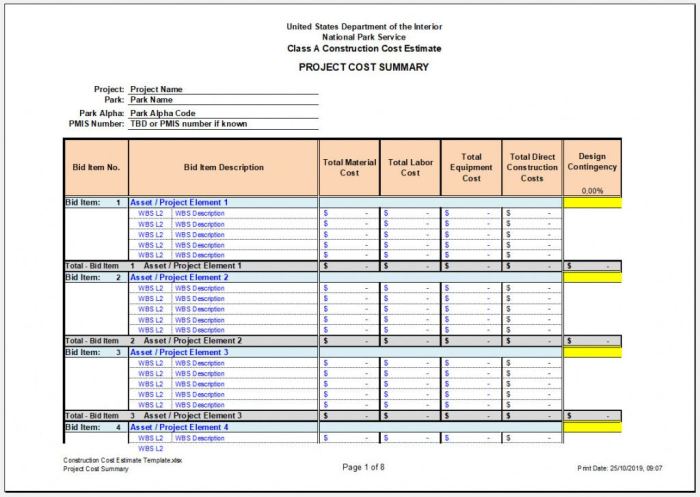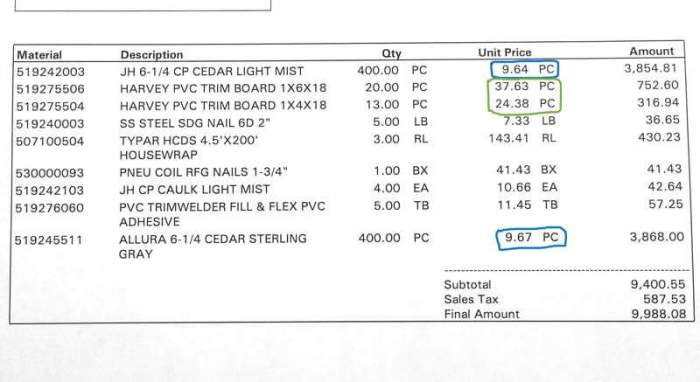Exploring Vinyl Siding Estimates: A Comprehensive Guide
Delving into the world of vinyl siding estimates, this guide aims to provide a detailed look at the key factors, costs, and processes involved. Whether you're a homeowner looking to renovate or a contractor seeking insights, this information will prove invaluable.
As we navigate through different types of vinyl siding, material costs, and labor estimates, you'll gain a deeper understanding of how to approach your next siding project with confidence.
Understanding Vinyl Siding Estimates
When considering vinyl siding for your home, it's essential to understand the factors that contribute to the cost of a vinyl siding estimate. This will help you make an informed decision and ensure you get the best value for your investment.
Factors Affecting Vinyl Siding Estimate Costs
- The size of your home: Larger homes will require more materials and labor, leading to higher costs.
- The quality of the vinyl: Higher quality materials will generally cost more but offer better durability and aesthetics.
- Additional features: Factors such as trim work, insulation, and accessories can increase the overall cost of the project.
- Labor costs: The rates charged by contractors can vary based on their experience, location, and demand.
Typical Range of Prices for Vinyl Siding Installation
- On average, vinyl siding installation costs between $3 to $7 per square foot.
- This price range can vary depending on the factors mentioned above.
- Higher-end vinyl siding can cost up to $12 per square foot, while budget options may be as low as $1.50 per square foot.
Process of Obtaining a Vinyl Siding Estimate
- Research and select reputable contractors in your area with experience in vinyl siding installation.
- Contact the chosen contractors to schedule a consultation and estimate appointment.
- During the appointment, the contractor will assess your home, discuss your preferences, and provide you with a detailed estimate.
- Review the estimates from different contractors, considering both the cost and the quality of materials and workmanship offered.
Comparing Different Types of Vinyl Siding

When it comes to choosing vinyl siding for your home, it's essential to understand the various types available and how they differ in quality, durability, appearance, and cost. Here, we will explore the different types of vinyl siding to help you make an informed decision for your siding installation project.
Vinyl Siding Types
- Traditional Vinyl Siding: This is the most common type of vinyl siding, known for its affordability and easy installation. It comes in a wide range of colors and styles, making it a versatile option for many homeowners.
- Insulated Vinyl Siding: Insulated vinyl siding offers improved energy efficiency by providing an extra layer of insulation to your home. While it may come at a higher cost, the long-term savings on energy bills can offset the initial investment.
- Vertical Vinyl Siding: Vertical vinyl siding offers a unique look compared to traditional horizontal siding. It can add a modern touch to your home's exterior, but installation may be more labor-intensive, affecting overall cost.
- Shake-Style Vinyl Siding: Mimicking the look of cedar shakes, shake-style vinyl siding provides a rustic charm to your home without the maintenance requirements of real wood. It can be a bit pricier than traditional vinyl siding but offers a distinct appearance.
Quality and Durability Comparison
- Traditional Vinyl Siding: While affordable and easy to install, traditional vinyl siding may be more prone to cracking and fading over time compared to other types.
- Insulated Vinyl Siding: With added insulation, this type of vinyl siding can improve the overall durability of your home's exterior and offer better protection against the elements.
- Vertical Vinyl Siding: Vertical siding may be more susceptible to water damage if not properly installed, but it can provide a unique aesthetic appeal to your home.
- Shake-Style Vinyl Siding: The shake-style vinyl siding is durable and resistant to pests and rot, making it a low-maintenance option for homeowners seeking a wood-like appearance.
Cost Considerations
- Traditional Vinyl Siding: Cost-effective and easy to install, making it a budget-friendly option for many homeowners.
- Insulated Vinyl Siding: While more expensive upfront, the energy-saving benefits of insulated vinyl siding can lead to long-term cost savings on heating and cooling bills.
- Vertical Vinyl Siding: Installation costs may be higher due to the labor-intensive nature of vertical siding, but the unique look can add value to your home.
- Shake-Style Vinyl Siding: The initial cost of shake-style vinyl siding may be higher than traditional vinyl, but the low maintenance and long-lasting durability can make it a cost-effective choice in the long run.
Calculating Material Costs
When it comes to vinyl siding projects, calculating material costs is a crucial step in determining the overall budget. This involves estimating the amount of vinyl siding needed based on the square footage of a home and factoring in additional materials like trim pieces and accessories.
Estimating Vinyl Siding Material
- Start by measuring the exterior walls of your home to determine the total square footage that needs to be covered with vinyl siding.
- Take into account the height and width of each wall, and don't forget to subtract any areas that won't be covered, such as doors and windows.
- Once you have the total square footage, you can use this measurement to estimate the amount of vinyl siding required. Most vinyl siding is sold by the square, which covers 100 square feet.
Calculating Material Costs
- After determining the square footage needed, you can calculate the cost of vinyl siding materials by multiplying the total square footage by the price per square of the vinyl siding you have chosen.
- Remember to factor in any additional materials needed for the project, such as trim pieces, corner posts, and accessories. These extra materials are essential for a professional and finished look.
Obtaining Accurate Labor Estimates
When it comes to vinyl siding installation, obtaining accurate labor estimates is crucial to ensure a smooth and cost-effective process. Labor costs can vary based on several factors, so it's essential to understand what influences these costs and how to evaluate estimates provided by contractors.
Factors Influencing Labor Costs
- The size of the project: Larger projects may require more labor hours, impacting the overall cost.
- Complexity of the installation: Intricate designs or hard-to-reach areas can increase labor costs.
- Experience of the contractor: Highly skilled contractors may charge higher rates for their expertise.
- Location: Labor costs can vary depending on the region and local market conditions.
Evaluating Labor Estimates
- Request detailed quotes from multiple contractors to compare labor costs and services offered.
- Ask for a breakdown of labor hours and rates to understand how the estimate was calculated.
- Check for any additional fees or charges that may impact the final labor cost.
- Verify the contractor's credentials, licenses, and insurance to ensure they are qualified for the job.
Negotiating Labor Costs and Ensuring Transparency
- Discuss any concerns or questions about the labor estimate with the contractor to find common ground.
- Be open to negotiating the labor costs based on the scope of work and your budget constraints.
- Request a written contract that Artikels all labor costs, terms of payment, and project timeline for transparency.
- Communicate clearly with the contractor throughout the project to address any unexpected changes or additional labor needs.
Epilogue

In conclusion, vinyl siding estimates play a crucial role in determining the overall success of a project. By considering the various factors discussed in this guide, you'll be well-equipped to make informed decisions and achieve the desired results.
FAQ Insights
What factors contribute to the cost of a vinyl siding estimate?
Factors such as siding material quality, project size, additional features, and contractor rates can influence the cost of a vinyl siding estimate.
How do you calculate the amount of vinyl siding material needed for a project?
You can calculate the amount of vinyl siding material needed by measuring the square footage of the area to be covered and factoring in waste percentages.
What are the differences in quality among different types of vinyl siding?
Higher quality vinyl siding tends to be thicker, more durable, and offer better resistance to fading and warping compared to lower quality options.
How can you evaluate labor estimates provided by contractors?
When evaluating labor estimates, consider the scope of work, experience of the contractor, and any additional services included in the quote.
What tips can help in negotiating labor costs for vinyl siding installation?
Being flexible with project timelines, bundling services, and getting multiple quotes can aid in negotiating labor costs for vinyl siding installation.




